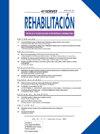Associations between bone mineral density loss in the past decade and sarcopenia in community-dwelling older women—The FRISBEE 2 study
IF 0.4
Q3 Medicine
引用次数: 0
Abstract
Objective
To assess the associations between EWGSOP2-defined sarcopenia and bone mineral density (BMD) loss in the past 6–16 years in community-dwelling older women from the Fracture RISk Brussels Epidemiological Enquiry (FRISBEE2) study.
Methods
Retrospective cohort design. Nine hundred seven community-dwelling older women constitute the baseline sample of the FRISBEE2 study. Participants had undergone an initial dual-energy X-ray absorptiometry (DXA) evaluation for osteoporosis in the past 6–16 years prior to the study's commencement and were re-assessed at baseline. Baseline evaluations included EWGSOP2-defined sarcopenia (handgrip strength, appendicular lean soft tissue mass/height2, 4-m gait speed) and osteoporosis assessment (total hip BMD). Baseline BMD value of each participant was compared with their own value in the previous DXA evaluation in the past 6–16 years. A BMD loss > 3.0% threshold was considered as “least significant change”. Adjusted multiple logistic regression models were used to evaluate associations between sarcopenia and BMD loss.
Results
Out of 907 participants, 172 (19.0%) had EWGSOP2-defined probable sarcopenia, 76 (8.4%) had confirmed sarcopenia, and 630 (73.2%) experienced significant BMD loss. After adjustment for confounders, regression models showed that BMD loss > 3% in the past years was associated to twofold higher odds of probable sarcopenia (i.e., low handgrip strength) [OR = 2.23 (95%CI 1.36–3.66); p = 0.002].
Conclusions
The study found a clinically relevant association between the presence of sarcopenia and bone loss in the past 6 to 16 years in community-dwelling older women. A significant BMD loss should alert clinicians to the possible coexistence of sarcopenia.
过去十年中社区老年妇女骨密度损失与肌肉减少症之间的关系——FRISBEE 2研究
目的评估来自骨折风险布鲁塞尔流行病学调查(FRISBEE2)研究的过去6-16年社区老年妇女ewgsop2定义的肌肉减少症与骨密度(BMD)损失之间的关系。方法回顾性队列设计。997名居住在社区的老年妇女构成了FRISBEE2研究的基线样本。在研究开始前的6-16年,参与者接受了最初的双能x线骨质疏松症(DXA)评估,并在基线时重新评估。基线评估包括ewgsop2定义的肌肉减少症(握力、阑尾瘦软组织质量/高度2、4米步速)和骨质疏松症评估(髋总骨密度)。将每位参与者的基线骨密度值与他们自己在过去6-16年的DXA评估中的值进行比较。骨密度损失3.0%的阈值被认为是“最不显著的变化”。采用调整后的多元logistic回归模型评估肌肉减少症与骨密度损失之间的关系。结果907名参与者中,172名(19.0%)患有ewgsop2定义的可能的肌肉减少症,76名(8.4%)确诊为肌肉减少症,630名(73.2%)经历了明显的骨密度损失。在调整混杂因素后,回归模型显示,过去几年骨密度损失3%与肌肉减少症(即握力低)的可能性增加两倍相关[OR = 2.23 (95%CI 1.36-3.66);p = 0.002]。结论:该研究发现,在过去6至16年的社区老年妇女中,肌肉减少症和骨质流失之间存在临床相关关系。明显的骨密度损失应提醒临床医生注意肌肉减少症的可能共存。
本文章由计算机程序翻译,如有差异,请以英文原文为准。
求助全文
约1分钟内获得全文
求助全文
来源期刊

Rehabilitacion
Medicine-Rehabilitation
CiteScore
0.80
自引率
0.00%
发文量
63
期刊介绍:
La revista que es desde hace más de 40 años la publicación oficial de la Sociedad Española de Rehabilitación y referente de la mayoría de las Sociedades de la Especialidad de los países americanos de habla hispana. Se publican 5 números pluritemáticos al año y uno monográfico sobre un tema del mayor interés y actualidad designado por el consejo de redacción.
 求助内容:
求助内容: 应助结果提醒方式:
应助结果提醒方式:


